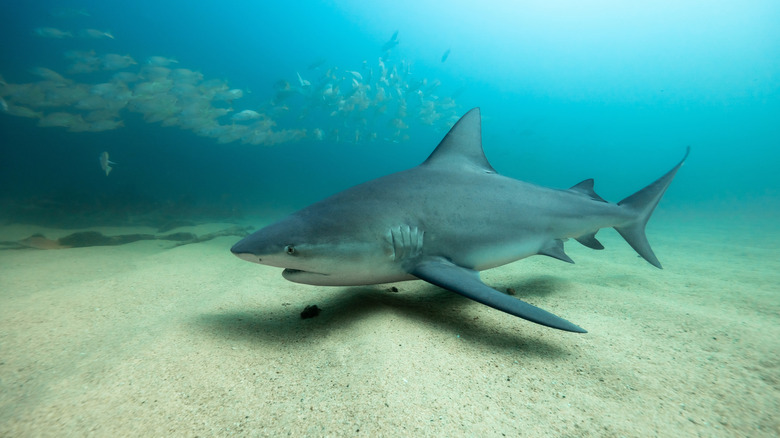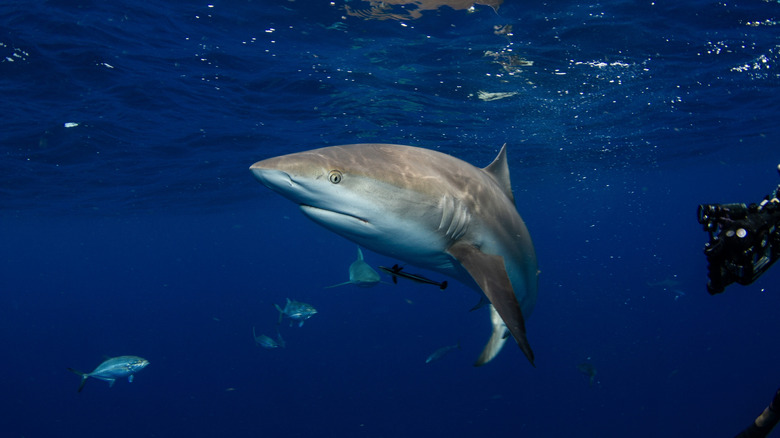
If you grew up in the Midwest, you likely heard tales of sharks inhabiting the Great Lakes. Perhaps you even believed them. The tens of thousands of lakes spread across Minnesota, Wisconsin, and Illinois are known for their murky, mysterious aura. Why should the Great Lakes, vast enough to be considered inland seas, be any different? These sharks would have ample space to remain undetected. And given that goldfish don’t actually have three-second memories, maybe we are wrong about this fishy fact, too?
Despite the intrigue, the concept of sharks living in the Great Lakes is essentially a scientific nonstarter. The explanation is rooted in basic biology. Most shark species evolved in saltwater environments, and freshwater disrupts their biological systems, causing chaos by affecting their senses, leading to dehydration, and interfering with their reproductive processes. Moreover, without the air bladders that fish possess, sharks in freshwater are likely to sink to the bottom of their unfamiliar habitat. Osmoregulation, the process by which sharks maintain the correct balance of salt and water in their bodies, is a critical factor here.
Sharks hydrate themselves by absorbing small amounts of saltwater through their gills. A gland in their digestive system expels excess salt, yet retains enough to balance the salt content in their bodies with that of the surrounding water. This osmotic balancing act minimizes the loss of vital cellular water to the ocean. In freshwater, sharks face the opposite problem. Osmosis attempts to equalize the high salt concentration in the shark’s body with its environment, and the sudden influx of freshwater overwhelms the shark’s system. Interestingly, this is true for all but one species of saltwater shark.
Why bull sharks can survive in freshwater

Unlike most of their saltwater relatives, bull sharks can transition from saltwater to brackish water (water less salty than true saltwater but saltier than freshwater) and from brackish to freshwater. This ability is due to their unique capacity to rapidly adjust their internal salt levels through an advanced osmoregulatory system. Their kidneys and special glands work tirelessly to retain or expel salt depending on their environment, granting the species access to ecosystems most sharks can’t enter. This adaptation is so efficient that bull sharks have even been found in North Carolina’s Neuse River. There’s also the legend of a bull shark that swam up the Mississippi River to Alton, Illinois, in 1937, just shy of Lake Michigan.
The story describes two local fishermen whose traps were being damaged by an unknown predator. Constructing a stronger trap, the two reportedly caught an 85-pound bull shark from the water. Locals took a photo, and scientists later confirmed that a photo from that time and area does show a bull shark. However, doubts exist as to whether the shark was caught elsewhere and brought there for a prank or if the account is genuine.
No conclusive evidence supports the Illinois legend (though you can see great white sharks off the coast of Massachusetts). However, juvenile bull sharks have historically been found in the Mississippi where it meets the Gulf of Mexico, suggesting that bull sharks likely use the area as a breeding ground. It’s a smart strategy — if you can give birth to and raise your offspring in waters inaccessible to shark predators, they have a much higher chance of survival. Regardless, the myth of the Great Lakes shark remains just that.
Why even bull sharks can’t thrive in the Great Lakes

Suppose a bull shark managed to swim upstream from the Gulf of Mexico and survive the journey to Lake Michigan. It wouldn’t last long. The Great Lakes are simply too cold, too fresh, and too isolated for sharks to thrive. Most shark species, including bull sharks, favor water temperatures above 70 degrees Fahrenheit. Extended exposure to cold can lead to hypothermic stress and death in bull sharks. The Great Lakes routinely dip below 40 degrees in winter and rarely exceed the low 70s in summer. Additionally, the network of human-made barriers separating the Mississippi from the lakes, including electric dispersal barriers and a maze of locks and dams, creates a gauntlet no shark is likely to navigate successfully.
Habitat and food also pose challenges. The open, cold, and low-salinity waters of the Great Lakes simply don’t support the prey species most sharks rely on. Despite their adaptability, bull sharks generally only tolerate environments outside of saltwater conditions in warm, brackish coastal waters and tropical rivers, such as those found in the Amazon.
Interestingly, sharks that specialize in freshwater do exist, just not in North America. A rare genus known as Glyphis includes species like the Ganges shark and the northern river shark, which inhabit warm, muddy rivers in regions like India, Papua New Guinea, and Western Australia. These sharks are specially adapted to their environments, but their global range is limited, and little is known about them due to habitat loss. So, while the notion of freshwater sharks isn’t fictional, their presence in the Great Lakes is. But who knows? We’ve been wrong before, like when everyone thought this 400-million-year-old fish was extinct.






